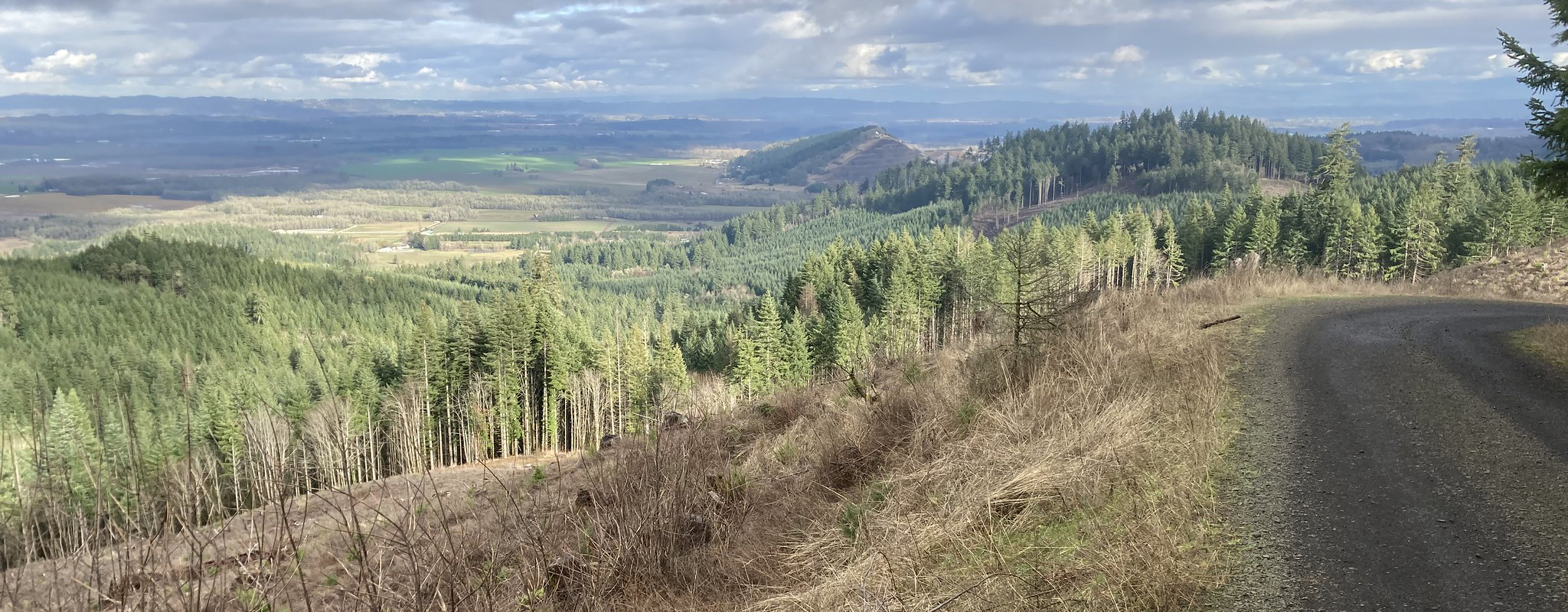After three years of collaborative work — under the direction of new college leadership and with broad engagement from faculty, Tribal partners, neighbors and other community members — the Oregon State University College of Forestry has finalized the 2025 McDonald-Dunn Forest Plan. This is the first full update to the forest’s management plan since 2005 and reflects a major step forward in how the College of Forestry stewards its research forests in a time of climate change, shifting wood product needs and the growing importance of healthy, resilient and sustainable landscapes. Read the OSU news release to learn more about the plan's development.
OSU is designated by the Oregon Legislature as home to the state’s Forest Research Laboratory. That role is reflected in how the McDonald-Dunn Forest is stewarded — as an actively managed forest that supports research, education and practical solutions for public agencies, private landowners and the forest industry. While many people enjoy recreating in McDonald-Dunn and the college continues to provide public access, the forest is not a park. It is a teaching and demonstration forest — a place where students and scientists can test ideas, study long-term change and explore how forest management choices affect ecosystems, communities and economies — and to prepare the next generation of forestry and natural resources leaders for the variety of management scenarios they may experience in the field.
Once a largely cut-over expanse, the forest as it exists today reflects nearly a century of science-informed management and demonstration of sustainable alternatives. The new plan builds on that foundation with a forward-looking, flexible approach centered on climate resilience, biodiversity, long-term learning and sustainable timber production. It outlines five distinct management strategies and affirms the forest’s role as a living laboratory and demonstration site. Sustainable timber harvests will continue, in line with donor intent and the need to support self-sustaining operations. At the same time, the plan recognizes that forest productivity and ecological objectives can — and must — coexist.
By serving as a model of a range of approaches, the McDonald-Dunn Forest will continue to help inform forestry practices across Oregon and beyond, and provide the landscape where researchers from the College of Forestry, OSU and multiple other institutions can conduct research on a variety of topics.
